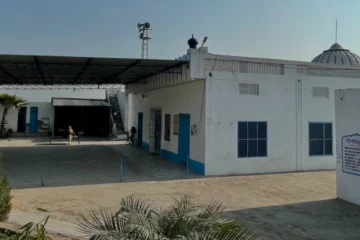
Celebrate Vaisakhi, the vibrant Sikh festival, with our comprehensive guide. Learn about its historical significance, religious observances, cultural celebrations, community gatherings, and modern observations. Explore the symbolism and values behind this auspicious occasion. Get insights into how Vaisakhi promotes unity, gratitude, and prosperity. Join us in honouring this rich tradition and its universal message of love and solidarity.
Introduction
Vaisakhi, also known as Baisakhi, holds immense cultural and religious significance, primarily celebrated by the Sikh community. This vibrant festival marks the Sikh New Year and commemorates the formation of the Khalsa Panth under Shri Guru Gobind Singh Ji in 1699. Let’s delve into the rich tapestry of traditions, values, and celebrations that define Vaisakhi.
Historical Significance
Origin and Background
Vaisakhi traces its roots back to ancient times, originating as a harvest festival in the Punjab region of India. It signifies the joy of farmers as they reap the fruits of their labour and welcome the new agricultural season with hope and enthusiasm.
Sikh Tradition
For Sikhs, Vaisakhi holds deep historical importance. It was on this auspicious day in 1699 that Dhan Dhan Shri Guru Gobind Singh Ji, the tenth Sikh Guru, established the Khalsa Panth, a community of initiated Sikhs. He initiated the first five members, known as the Panj Pyare, who embody the qualities of courage, sacrifice, and devotion.
Harvest Festival
Beyond its religious connotations, Vaisakhi remains a quintessential harvest festival, celebrated with fervour across Punjab and other parts of India. It symbolizes prosperity, abundance, and the cycle of life, as communities come together to rejoice in the bounties of nature.

Religious Observances
Sikhism Celebrations
In Sikh households and gurdwaras (Sikh temples), Vaisakhi is marked by special prayers, hymn recitations, and readings from the Guru Granth Sahib, the holy scripture of Sikhism. Devotees gather to offer thanks for the blessings of the past year and seek divine guidance for the year ahead.
Importance of Temples
Gurdwaras play a central role in Vaisakhi celebrations, serving as hubs of spiritual and communal activities. They host langar, a communal meal where everyone, regardless of caste, creed, or status, sits together and partakes in a vegetarian feast as a symbol of equality and unity

Cultural Celebrations
Traditional Attire
During Vaisakhi, people adorn traditional Punjabi attire, with men wearing colourful turbans and women donning vibrant salwar kameez or phulkari suits. The festivities are a riot of colours, echoing the joy and exuberance of the occasion.
Music and Dance
Music and dance are integral to Vaisakhi celebrations, with bhangra and giddha performances electrifying the atmosphere. These energetic folk dances express the spirit of Punjab, with rhythmic beats and graceful movements captivating audiences.
Community Gatherings
Nagar Kirtan Procession
One of the highlights of Vaisakhi is the Nagar Kirtan procession, where devotees take to the streets singing hymns and carrying the Sikh flag, known as the Nishan Sahib. The procession symbolizes the Sikh values of humility, service, and spreading goodwill.

Langar Seva
Another hallmark of Vaisakhi is langar seva, where volunteers come together to prepare and serve free meals to all attendees. This act of seva (selfless service) embodies the Sikh principle of sharing and caring for others, regardless of social or economic differences.
Modern Observations
Global Recognition
In recent years, Vaisakhi has gained global recognition, with Sikh communities around the world organizing elaborate festivities to showcase their cultural heritage and religious traditions. Cities like London, Toronto, and New York host grand Vaisakhi parades, attracting thousands of participants and spectators.

Vaisakhi Parades
Vaisakhi parades feature colourful floats, martial arts demonstrations, and live music performances, creating a festive atmosphere that transcends cultural boundaries. These parades serve as platforms for fostering interfaith dialogue, promoting diversity, and celebrating unity in diversity.
Symbolism and Values
Unity and Solidarity
At its core, Vaisakhi symbolizes unity, solidarity, and the spirit of community. It reminds us of the importance of coming together as one family, irrespective of our differences, to celebrate shared values and aspirations.
Gratitude and Prosperity
Vaisakhi teaches us to cultivate an attitude of gratitude for the blessings we receive and to share our abundance with those in need. It inspires us to strive for prosperity not just for ourselves but for the entire community, fostering a sense of collective well-being and prosperity.
Conclusion
Vaisakhi is more than just a festival; it’s a celebration of faith, culture, and the indomitable spirit of humanity. As we come together to mark this auspicious occasion, let us renew our commitment to the values of compassion, equality, and service that lie at the heart of Sikhism.
FAQs: Vaisakhi Celebration
1. What is the significance of Vaisakhi for Sikhs?
Vaisakhi commemorates the formation of the Khalsa Panth and marks the Sikh New Year.
2. How do Sikhs celebrate Vaisakhi?
Sikhs celebrate Vaisakhi with prayers, hymns, langar seva, Nagar Kirtan processions, and community gatherings.
3. Why is langar seva important during Vaisakhi?
Langar seva embodies the Sikh principle of selfless service and promotes equality by providing free meals to all.
4. How has Vaisakhi gained global recognition?
Vaisakhi parades and festivities organized by Sikh communities worldwide have helped raise awareness and promote cultural diversity.
5. What values does Vaisakhi promote?
Vaisakhi promotes values such as unity, solidarity, gratitude, and prosperity, fostering a sense of community and shared humanity.


